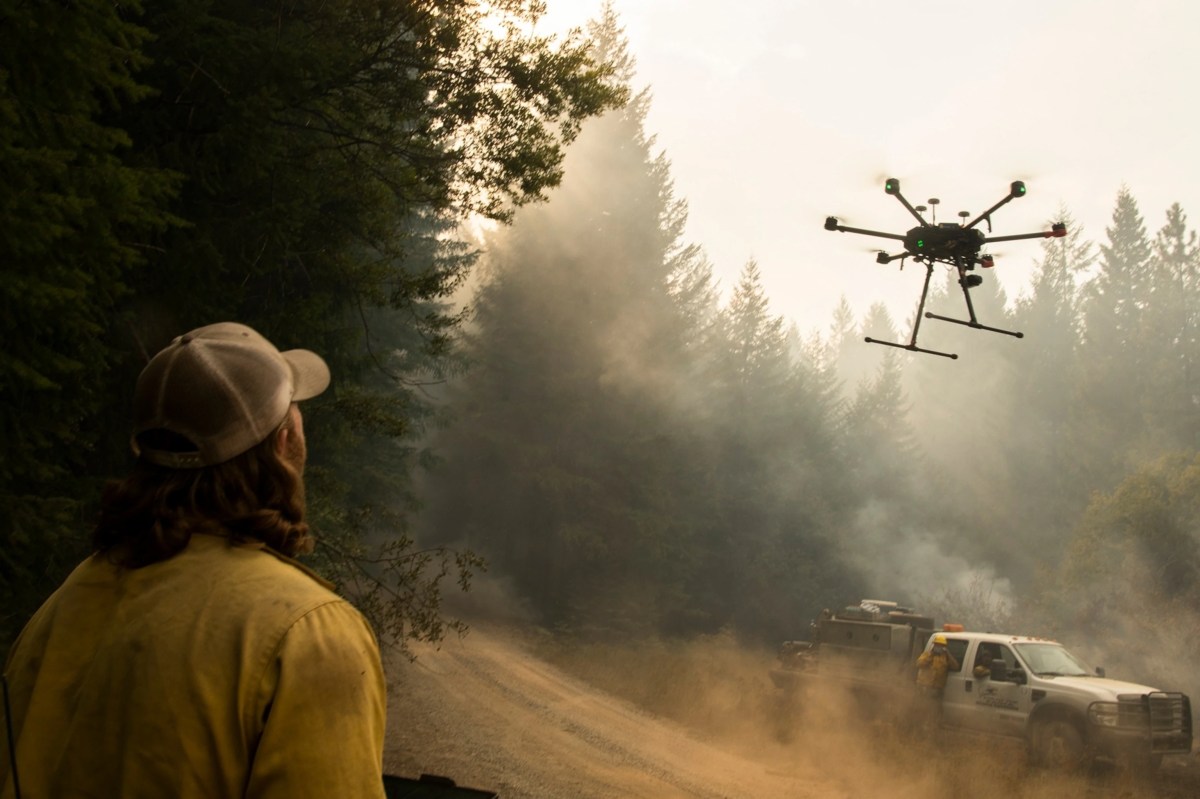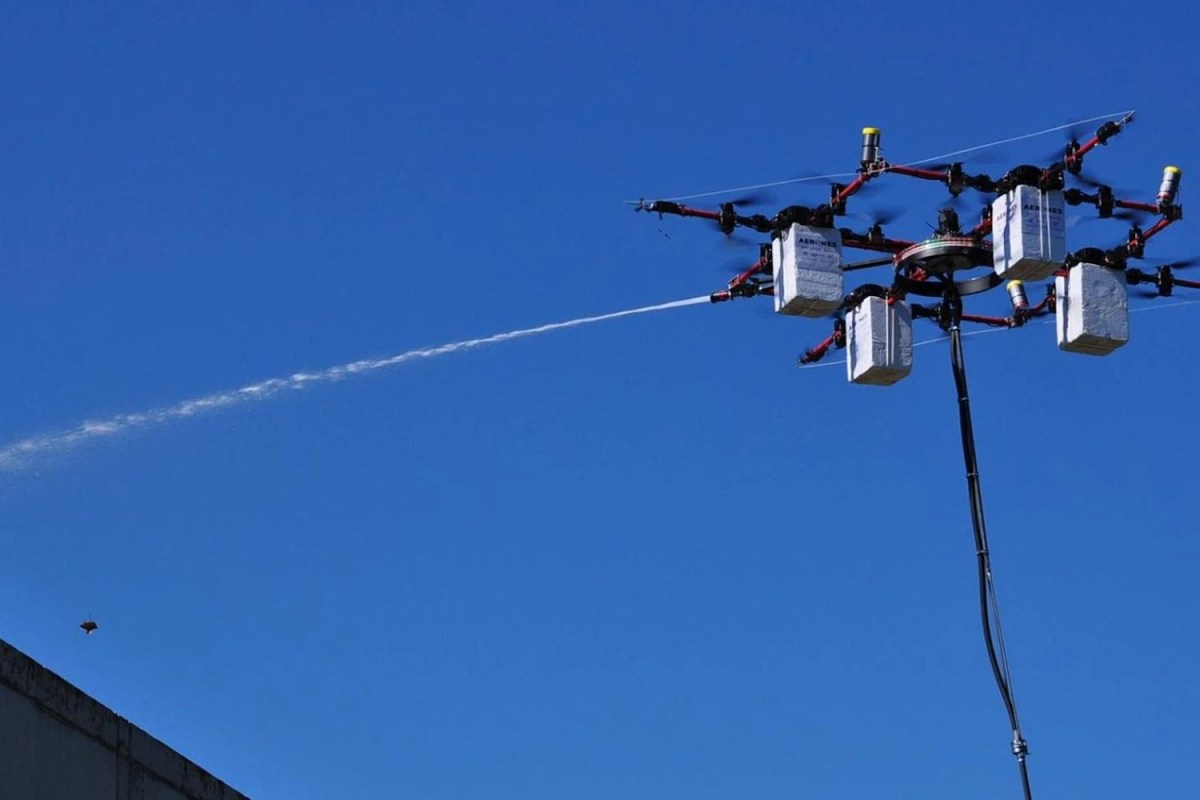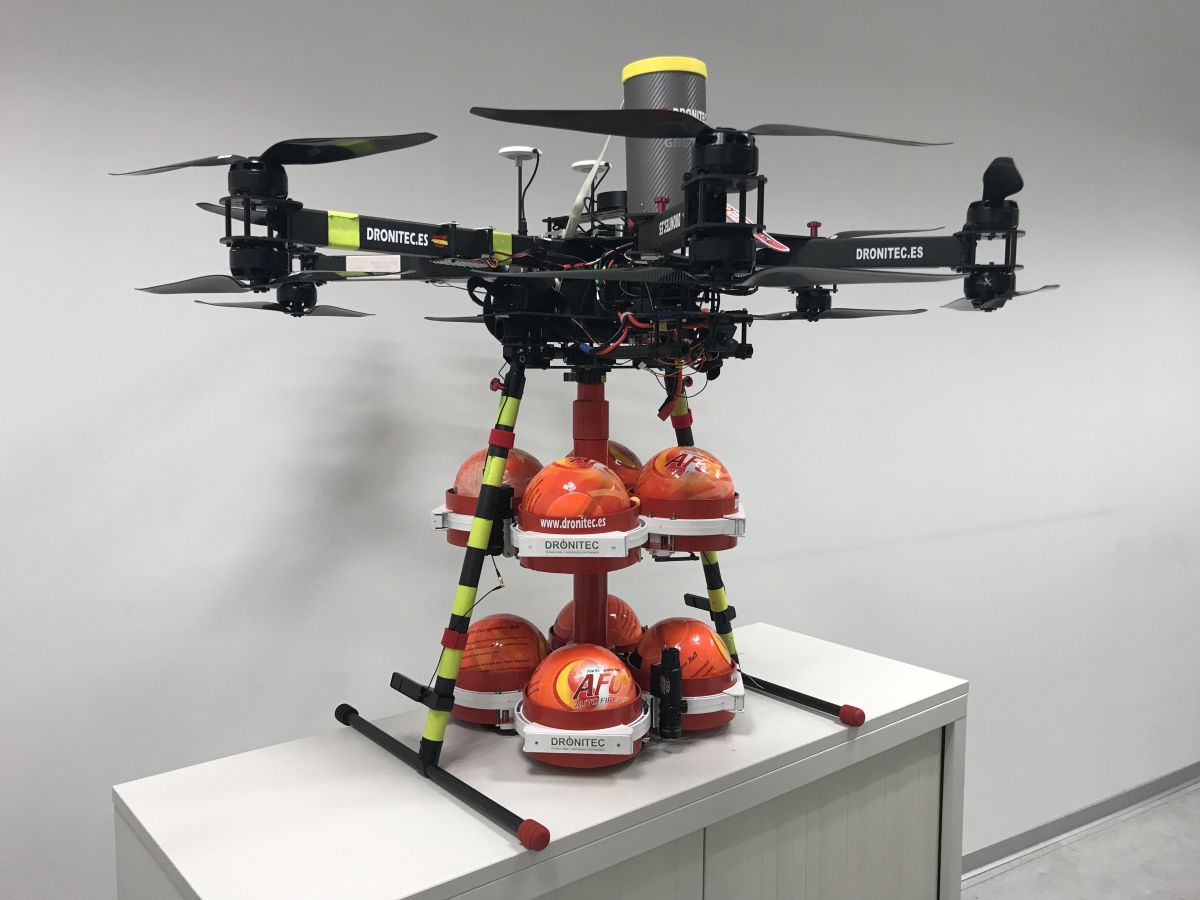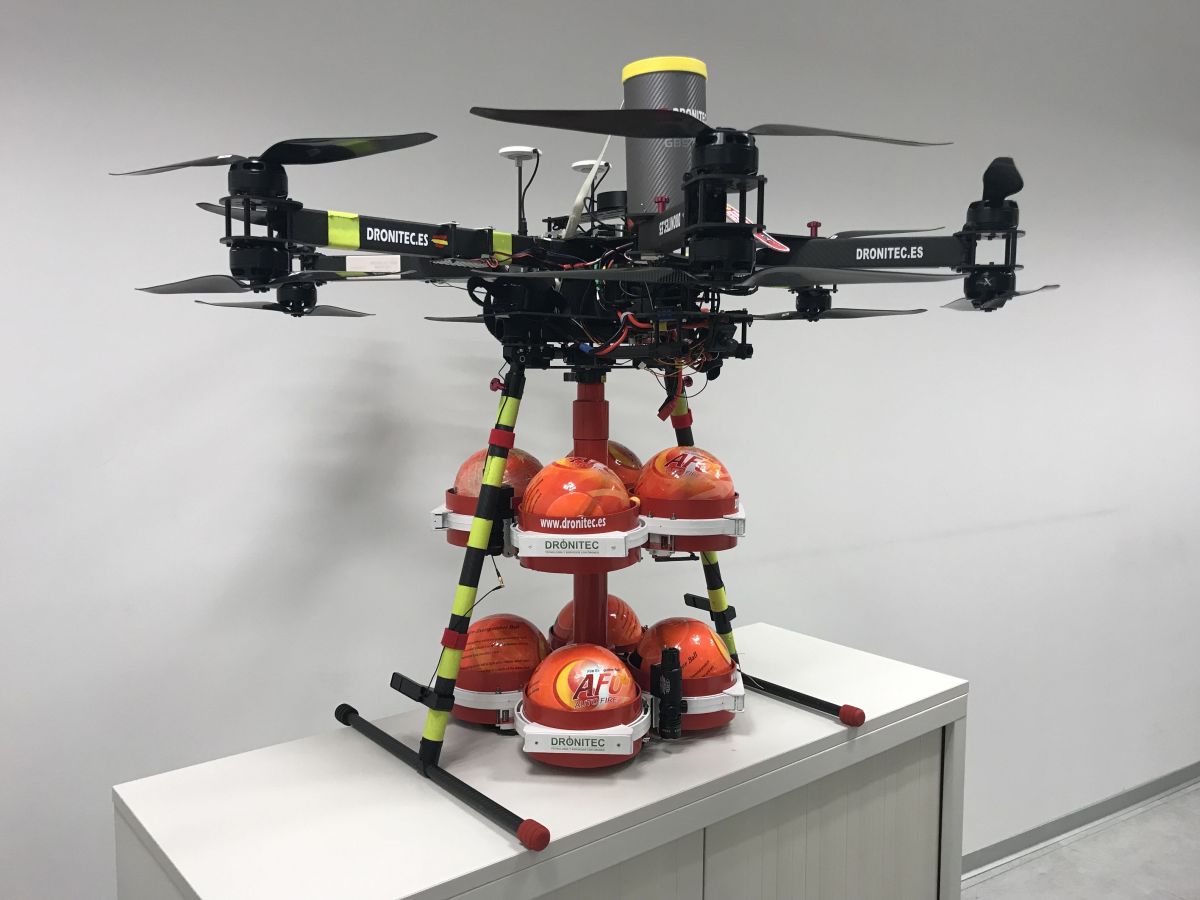Drone hits firefighting plane – it sounds like a scene from a disaster movie, but it’s a real and growing danger. Imagine a wildfire raging, firefighters battling the blaze from above, and suddenly, a rogue drone collides with their aircraft. This isn’t just a hypothetical scenario; it’s a potential catastrophe with serious consequences for firefighters, the environment, and the effectiveness of crucial emergency response efforts.
We’ll explore the causes, consequences, and potential solutions to this escalating problem.
This article delves into the increasing threat posed by drones to firefighting aircraft. We’ll examine the types of drones involved, the potential impact on firefighting operations, and the current safety regulations in place. We’ll also discuss technological solutions, legal implications, and the crucial role of public awareness in preventing future incidents. The goal is to understand the problem, identify solutions, and ultimately, protect the lives and resources dedicated to battling wildfires and other emergencies.
Crazy news, a drone just took out a firefighting plane! It’s a reminder how easily things can go wrong with technology. This makes me think about the impact of disruptions, like the ongoing ontario colleges faculty strike , which is causing its own kind of chaos in a different sector. Hopefully, the drone incident doesn’t lead to further complications for wildfire efforts already strained by resources.
Drone Strikes on Firefighting Aircraft: A Comprehensive Analysis: Drone Hits Firefighting Plane
The increasing prevalence of drones presents a growing threat to various sectors, including aviation. This article delves into the critical issue of drones striking firefighting aircraft, exploring the circumstances surrounding such incidents, safety regulations, technological solutions, legal implications, and public awareness strategies. We aim to provide a comprehensive overview of this emerging challenge and propose potential mitigation strategies.
Incident Overview, Drone hits firefighting plane

Drone strikes on firefighting aircraft are a serious concern, potentially jeopardizing firefighting operations and endangering both pilots and ground crews. The impact of a drone, even a small one, on a fast-moving aircraft can be catastrophic, leading to significant damage or even a complete loss of the aircraft. Several factors contribute to the risk, including the increasing number of drones in operation, lack of awareness among drone operators regarding airspace restrictions, and inadequate detection and avoidance technologies.
Various drone types pose a threat, ranging from small consumer drones to larger, more powerful models. The size and weight of the drone directly influence the severity of the impact on an aircraft. Even a relatively small drone striking a critical part of the aircraft, such as the engine or cockpit, could have devastating consequences. The potential impact on firefighting operations includes delays in responding to emergencies, loss of valuable firefighting resources, and increased risk to lives and property.
While a comprehensive timeline of drone strikes on firefighting aircraft is currently unavailable due to underreporting and the relative newness of this specific threat, several incidents involving drones and other aircraft have been reported. These incidents highlight the urgent need for increased awareness and stricter regulations.
So, a drone took out a firefighting plane – crazy, right? It makes you think about the unpredictable nature of technology, and how even seemingly unrelated things can connect. For example, the whole unpredictable volatility of something like the elon musk dogecoin market mirrors the chaotic unpredictability of a drone suddenly disabling a crucial piece of firefighting equipment.
Ultimately, both highlight the need for better safety regulations and controls.
| Aircraft Type | Size (Wingspan approx.) | Speed (Cruise Speed approx.) | Drone Model | Size (Rotor Diameter approx.) | Speed (Max Speed approx.) |
|---|---|---|---|---|---|
| Air Tractor AT-802 | 14.6 m | 200 mph | DJI Mavic 3 | 0.3 m | 47 mph |
| Canadair CL-415 | 28.6 m | 200 mph | Autel Evo II Pro | 0.28 m | 40 mph |
| Boeing 737-based tanker | 35.8 m | 500 mph | DJI Phantom 4 Pro | 0.25 m | 45 mph |
Safety Regulations and Protocols

Existing regulations concerning drone operation near airports and emergency response areas vary across jurisdictions but generally prohibit drone flight within a specified radius of these locations. However, enforcement and awareness remain challenges. Safety protocols for drone operators emphasize adhering to these regulations, registering drones, and maintaining visual line of sight. Firefighting crews should have established communication procedures and be trained to recognize and report drone activity near their operations.
Gaps in current regulations include a lack of standardization across jurisdictions, inadequate enforcement mechanisms, and insufficient public awareness. Improvements could involve stricter penalties for violations, increased public education campaigns, and the implementation of drone detection and identification technologies. A comprehensive safety training program for drone operators should include detailed instruction on airspace regulations, emergency response procedures, and best practices for safe drone operation near sensitive airspace.
- Comprehensive airspace awareness training.
- Emergency response protocol education.
- Hands-on simulation exercises.
- Regular updates on airspace restrictions.
Technological Solutions and Mitigation Strategies
Several technologies can help prevent drone-aircraft collisions. Radar systems, both ground-based and airborne, can detect drones within a certain range. Drone detection systems utilize various sensors and algorithms to identify and track unauthorized drones. These systems can provide alerts to pilots and air traffic controllers, allowing for evasive maneuvers or intervention.
A drone hitting a firefighting plane is a serious safety issue, highlighting the dangers of irresponsible drone operation. Think about the potential consequences – it’s a real problem, especially in busy airspace like Los Angeles, where you can find info on responsible drone use at drone los angeles resources. Understanding and following drone regulations is crucial to prevent similar incidents involving firefighting aircraft and ensuring everyone’s safety.
The feasibility and cost-effectiveness of implementing these technologies vary depending on the specific system and the scale of deployment. A system for identifying and tracking unauthorized drones near firefighting operations could involve a combination of ground-based sensors, radar, and drone identification technologies. This integrated approach would provide a comprehensive monitoring system, allowing for proactive intervention to prevent potential collisions.
- High-Effectiveness, High-Cost: Advanced radar systems integrated with AI-powered drone identification.
- Moderate Effectiveness, Moderate Cost: Ground-based drone detection systems with visual and acoustic sensors.
- Low Effectiveness, Low Cost: Public awareness campaigns and improved drone registration procedures.
Legal and Ethical Implications

The legal ramifications of a drone striking a firefighting aircraft are significant. Drone operators could face criminal charges, civil lawsuits, and substantial financial penalties depending on the severity of the incident and the degree of negligence involved. Ethical considerations for drone operators emphasize the importance of prioritizing public safety and responsible drone operation. Negligent drone operation resulting in damage or injury could lead to legal action against the drone owner or operator.
A hypothetical legal case study could involve a drone operator flying their drone near a wildfire, resulting in a collision with a firefighting aircraft. The potential outcomes would depend on factors such as the operator’s adherence to regulations, the extent of the damage, and the presence of any injuries. The court might consider negligence, recklessness, and the potential for punitive damages.
Public Awareness and Education
A public awareness campaign should emphasize the dangers of operating drones near emergency response areas. Clear guidelines for responsible drone operation near airports and emergency response areas are crucial, outlining safe distances, airspace restrictions, and emergency contact procedures. Effective communication involves utilizing various channels, including social media, educational materials, and partnerships with drone clubs and organizations.
- Understand airspace restrictions.
- Register your drone.
- Maintain visual line of sight.
- Never fly near emergency response areas.
- Report any drone incidents to the authorities.
Illustrative Scenario

Imagine a wildfire raging near a populated area. A firefighting aircraft, a large air tanker, is making a water drop when a large consumer drone, unexpectedly, enters its flight path. The drone, likely unregistered and operated by an unaware individual, collides with the aircraft’s wing. The impact causes significant damage to the wing, disrupting the aircraft’s aerodynamics. The pilot manages to land the aircraft safely, but the aircraft is grounded for repairs, delaying crucial firefighting efforts.
The drone operator, subsequently identified, faces legal repercussions for reckless operation.
The damaged aircraft shows a significant dent and tear in its wing, requiring extensive repairs. The surrounding area is marked by the debris of the drone and a noticeable fuel leak from the aircraft. While the crew escaped injury, the incident caused a significant delay in fire suppression, leading to greater property damage and potential environmental impact due to the uncontrolled spread of the fire.
Conclusion
The collision of drones and firefighting aircraft presents a complex challenge requiring a multifaceted approach. From stricter regulations and improved drone detection technology to comprehensive public awareness campaigns and enhanced safety protocols, addressing this threat demands collaboration between drone operators, aviation authorities, and the firefighting community. Only through a concerted effort can we mitigate the risks and ensure the safety of those bravely fighting fires from the air and on the ground.
Question & Answer Hub
What are the penalties for operating a drone near a wildfire?
Penalties vary by location but can include hefty fines, jail time, and the seizure of the drone. Regulations are often stricter near emergency response areas.
How can I report a drone operating unsafely near an airport or wildfire?
Contact your local authorities or the relevant aviation authority immediately. Many countries have specific reporting mechanisms for unsafe drone activity.
Are there specific frequencies drones use that could interfere with firefighting aircraft?
While not all drones use frequencies that directly interfere, the possibility of signal interference and GPS disruption exists and is a concern near sensitive operations.
What types of technology are being developed to prevent drone collisions with aircraft?
Technologies include radar systems, counter-drone systems, and improved GPS tracking and geofencing capabilities to restrict drone flight in sensitive areas.
